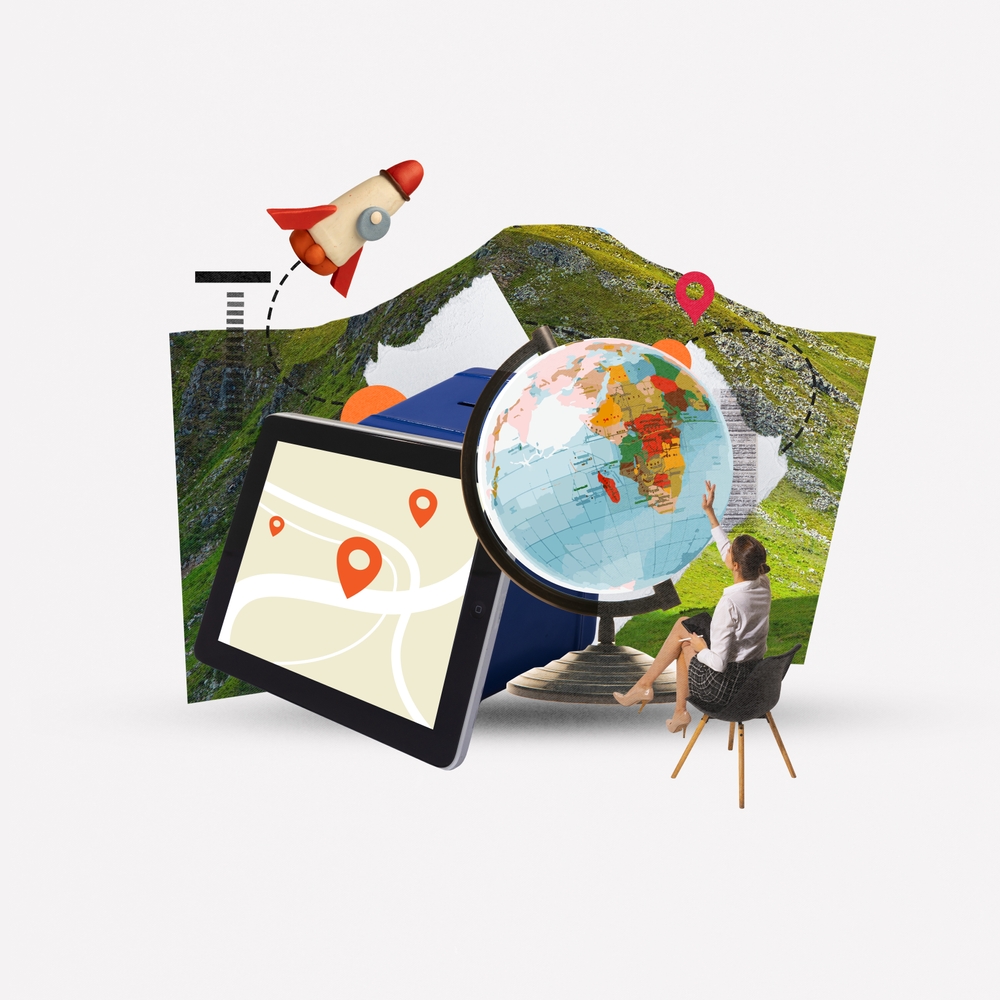Tourism is one of the key industries driving economic growth. With Vietnam’s abundant natural beauty and diverse landscapes, tourism has significant potential to attract visitors across different regions. However, the challenge lies in developing tourism sustainably while maximizing these advantages.
How can sustainable tourism be achieved, and what role does digital mapping technology play in this mission? Let’s explore this topic with MapFusion in this article.

Sustainable Tourism – A Necessary Solution for the Industry
Sustainable tourism focuses on long-term development, built on three key pillars:
Environmental protection
Cultural and social integration
Economic sustainability
This model ensures that tourism thrives without harming natural ecosystems, preserving resources for future generations.
To successfully implement sustainable tourism, several factors are required, including natural conditions, human resources, and technological support. Among them, data plays a crucial role in planning and executing sustainable tourism initiatives.
Every region has unique environmental conditions and cultural characteristics, requiring a comprehensive and accurate information system. In this case, digital maps serve as the most effective tool to provide real-time, precise, and visually intuitive data.
Key Criteria for Choosing the Right Digital Mapping Platform
Planning for sustainable tourism requires careful consideration and attention to detail. Since tourism development involves large-scale infrastructure and asset management, several challenges must be addressed, including infrastructure planning, travel route optimization, promotion, and efficient resource utilization.
To meet these demands, businesses and tourism authorities need a high-quality digital mapping platform that meets the following criteria:
1. Accuracy
A reliable digital map must offer a vast and continuously updated database, ensuring precise geographical data. It must also align with national sovereignty standards for borderlines, islands, and territorial integrity, serving as a solid foundation for sustainable tourism development.
2. Visual Representation
Geographic data must be digitized and displayed in an intuitive manner, providing clear road networks, landmarks, natural features, and terrain details. This ensures easy navigation and comprehension for both travelers and tourism managers.
3. Scalability
A robust mapping platform should seamlessly integrate with other technologies, allowing businesses to develop new applications and customized features to meet specific operational needs.
Benefits of Digital Maps in Tourism Development

For Travelers
Enhanced Travel Experience – Digital maps provide detailed location data, allowing travelers to easily navigate and explore destinations. This minimizes search time and effort, ensuring a smoother experience.
Diverse Information Access – Maps include tourist attractions, restaurants, bus stations, hotels, and other amenities, helping visitors make informed decisions tailored to their preferences.
Efficient Trip Planning – With comprehensive overviews of destinations and transport options, travelers can make smarter choices regarding itineraries, accommodations, and travel routes.
Cost and Time Optimization – Maps offer insights into the best travel routes, convenient stops, and transport options, enabling visitors to maximize efficiency and minimize expenses.
Interactive Features – Many tourism maps allow users to zoom, rotate, and interact with different layers of data. Travelers can also submit reviews, share feedback, and contribute to a growing travel community, enhancing overall engagement.
For Tourism Businesses
Efficient Asset Management – Integrating Maps API into tourism management software allows businesses to monitor infrastructure, track lighting systems, and oversee green space development.
Expanded Reach and Promotion – Digital maps enable businesses to market their services on a global scale. With internet access and mobile apps, tourism-related information can be instantly shared with a vast audience.
Tourism Operations Management – Digital maps facilitate booking systems, reservation tracking, and itinerary management, increasing efficiency and reducing errors. This enhances customer satisfaction and business productivity.
Data-Driven Decision-Making – Maps analyze visitor trends, tracking popular destinations, travel methods, and user behavior. These insights help businesses optimize services, introduce targeted promotions, and boost revenue.
Conclusion
Digital maps are redefining the tourism industry, offering powerful tools for sustainable development, infrastructure planning, and customer engagement. From enhancing traveler experiences to streamlining business operations, digital mapping is no longer just an option – it is a necessity for modern tourism.
Are you ready to integrate digital mapping into your tourism business?
Sign up for MapFusion today to explore the endless possibilities of digital maps in the travel industry!
